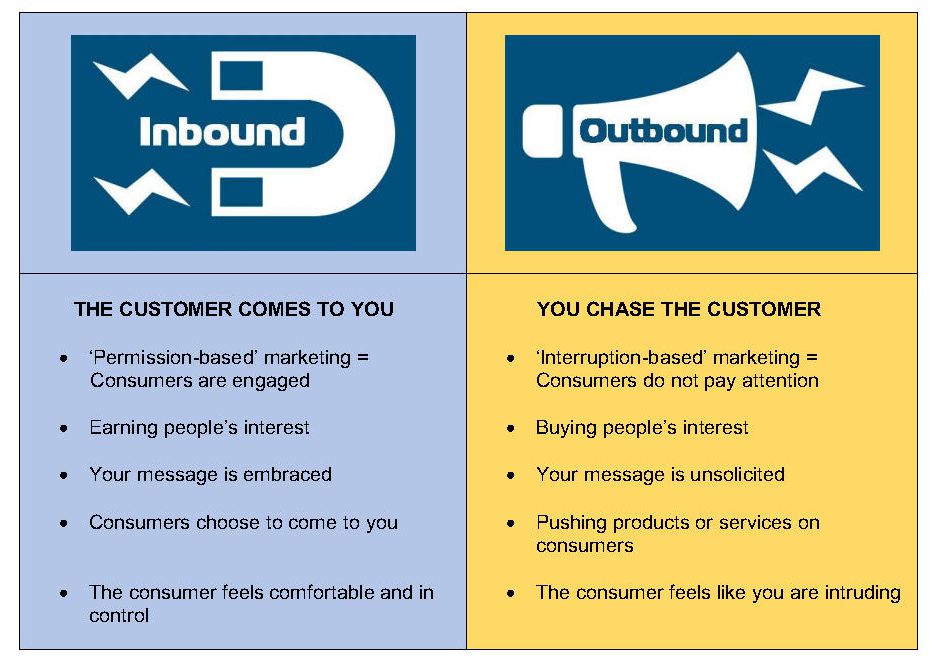The Copywriting Success Formula
Every good copywriter knows that the essence of their craft is to create a message that persuades. Ideally, the created message should be more persuasive than your client’s competitors and conveyed in a way that reaches the marketplace effectively.
Then the client gets more customers, you get recurring work, and everyone is happy…
The Copywriting Success Formula is made up of two key marketing fundamentals:
• Creating a persuasive message
• Conveying that message via the right channels
Changing the Fundamentals
Over the last decade or so, marketing has evolved and there’s been a paradigm shift in the strategies related to marketing fundamentals – message and distribution.
This shift has had a major impact on how copywriters define themselves and their craft, and has led to two distinct schools of thought: the ‘traditional’ approach, known as ‘outbound marketing’, and the ‘new’ approach called ‘inbound marketing’.
Outbound Marketing – pushing products or services
Outbound marketing is an ‘interruption-based’ model, with the message being delivered in a way that will likely be seen as intrusive.
In order to be persuasive, you need to write messages that are loud, clever, even outlandish, designed to reach everyone (although many are starting to question the validity of this philosophy).
Distribution is via TV, Radio, Print Ads, Pay-per-click Ads, Direct Mail, Newspapers and Billboards – mediums that are designed to deliver unsolicited messages.
Inbound Marketing – earning interest rather than buying it
Inbound marketing is a ‘permission-based’ model, where the prospect has control over the information they receive.
You’re persuasive when the message is based on quality content – consistent, valuable and relevant – to attract and engage a clearly-defined audience.
Distribution is via Blogging, Emails and Social Media – mediums that are designed to educate and build trust.
Why Inbound Marketing is Better…
For the modern consumer:
Inbound marketing meets the requirements of a high proportion of modern consumers.
They’ve become a lot more discriminating when it comes to purchasing. This means they prefer to have control over the information they acquire to make an informed choice, rather than be advertised at.
For the business owner:
There are two major advantages of inbound marketing:
1. By being non-confrontational, and by letting the consumer come to you, you build strong, ongoing relationships between consumers and your brand.
2. The long-term ROI is higher. In some cases, it may require more upfront investment than outbound marketing. But over time, the value of inbound marketing assets increases at a higher rate than they cost to maintain or improve.
What does this mean for copywriters?
The fundamentals of writing copy have changed.
Message: Your best persuasion tool is education. By providing information that allows a prospect to find you and then choose you, you focus on earning people’s interest rather than trying to buy it.
Distribution: Instead of trying to reach as many people as possible, even if they aren’t interested, you target potential customers who’re already actively in the market via mediums in which they want to communicate.
If you’d like to read more about the art of copywriting, look out for more blogs in this series. Or if you’d like to share your thoughts, contact me at [email protected].

